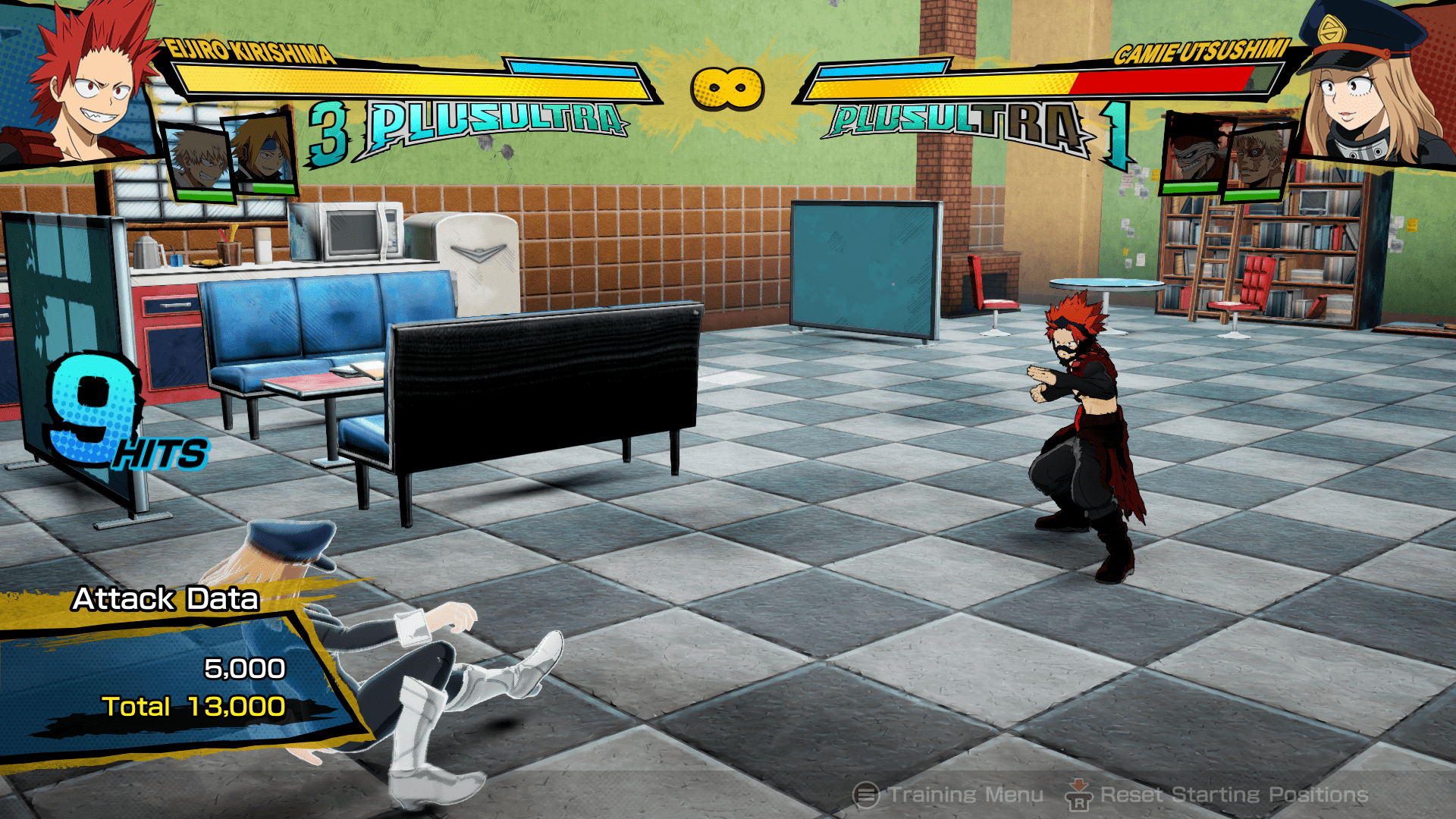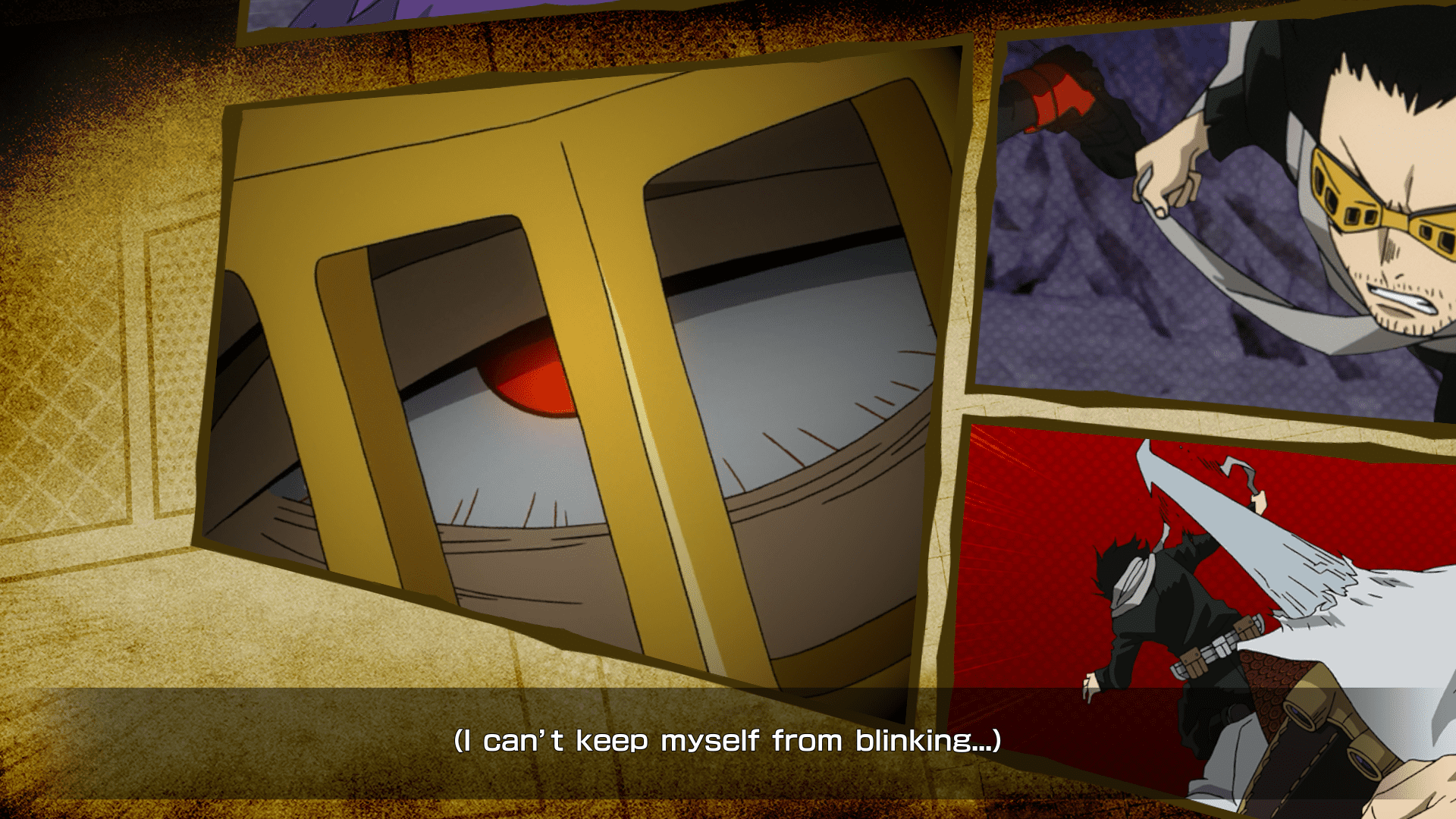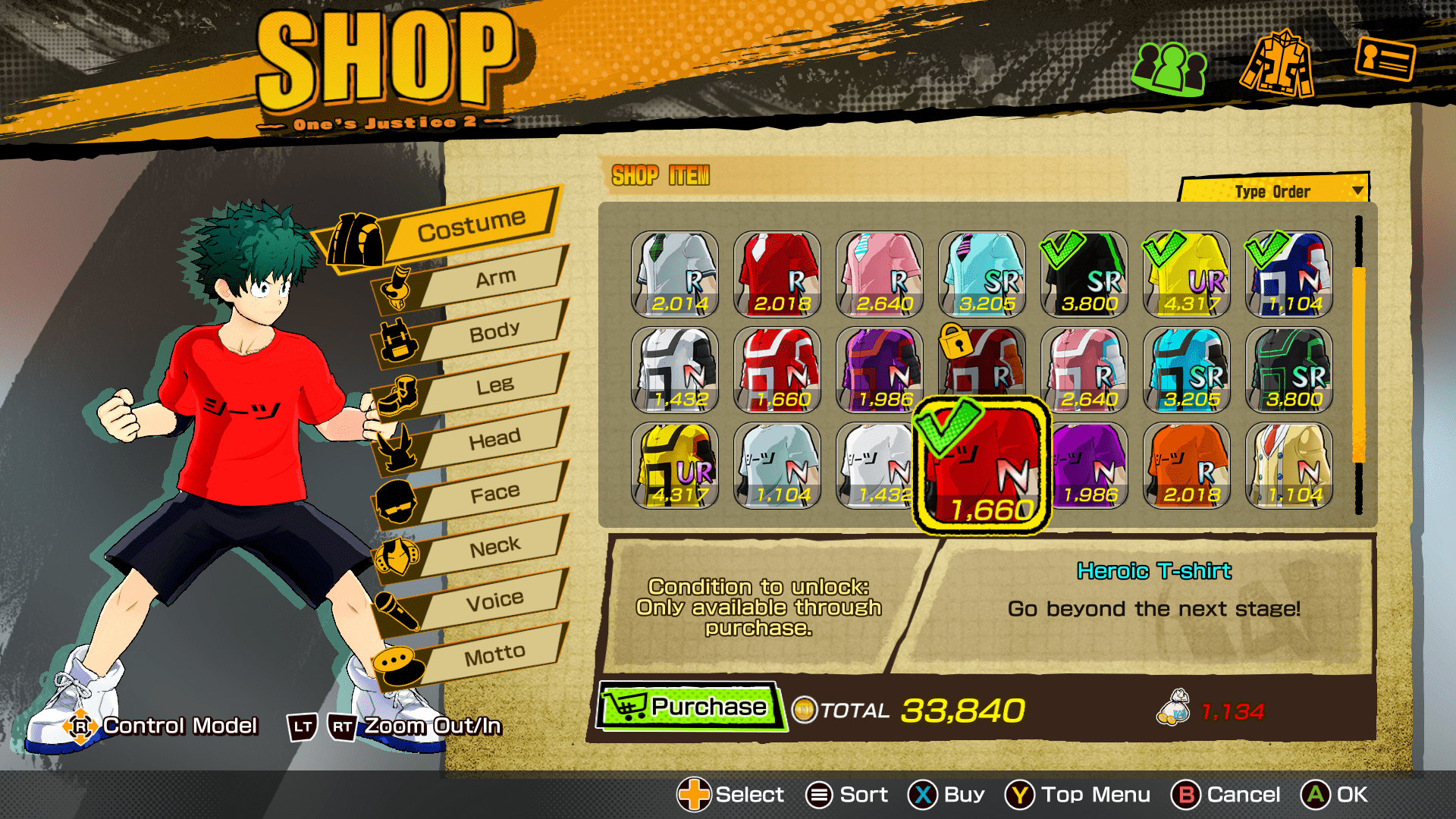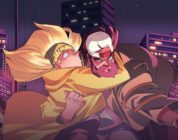While many licensed games are proving that high quality and satisfying fan service can both be achieved in the same production, this has yet to be the norm. This conclusion was made painfully obvious during my time with My Hero One’s Justice 2 on the Xbox One. All things considered, I am in the target audience for this title. I love the My Hero Academia anime and I consider it one of the most heartfelt underdog stories in Shonen; it has its ups and downs sure but there are incredible moments involving Deku and pals that resonate so deeply with me. Unfortunately, One’s Justice 2 is a big miss mechanically, technically, and in providing a fun way to interact with this series.
Note, I didn’t get a chance to play the first My Hero One’s Justice so if the overall structure has improved or worsened that won’t be my angle of approach for this review. I am focusing solely on this game and how it might cater to the My Hero Academia fanbase.
For starters, this is not how the story of My Hero Academia should be experienced for the first time. For those looking for a way to get in, please check out the anime or manga. The story presented in One’s Justice 2 is a super abridged version of the arc following All Might fighting a big villain and passing the torch, up to the battle with Overhaul. For anyone worried about spoilers, know that this game covers that section and my discussion will focus more on how the game interprets this story, rather than the actual moments of the story itself.
One’s Justice 2 is a fighting game with two dominant modes of play; 1v1 and 1v1 with two sidekicks. While there’s an option to play 1v1 in versus and that’s the style most of the game’s story missions are in, I recommend sticking to 1v1 with sidekicks most of the time as it feels at more balanced than without it, though know now that this game definitely does not feel balanced overall. When using sidekicks, players pick two supporting characters that can be called in to do an attack or a super attack. This is mapped to the triggers on Xbox One with one click to summon and two clicks to pull off a level 1 super move. Sidekicks are solely for support, so there’s no switching like there is in Marvel vs Capcom or Dragon Ball FighterZ. To me, having sidekicks is the most unique and most interesting feature of One’s Justice 2 that can lead to some basic strategy. Unfortunately, this mechanic set is more surface value than an actual engaging system and that carries through the entire experience.
With fighting games, I like just jumping into a few versus sets against the CPU or a friend to get a feel for the basic movement and pacing. Even at character select, I could tell that One’s Justice 2 was going to have performance issues. Just scrolling through characters bogs down the display. So, from here I picked Bakugo, a couple supports, and jumped into a match. It wasn’t long before I was trying out a super move, where one has a few options with their Plus Ultra meter. It builds up to three levels and each character has a level 1 special attack and a flashier level 2 attack. Players can also use the level 1 attack of their supports or when the bar is full they can unleash all three character’s level 1 attacks in an all-out assault and some specific team compositions have callouts. Now, I fired into Bakugo’s level 2 attack only to see one of the ugliest, choppiest special moves I have ever seen in a fighting game. The framerate tanked, the colors were garish, and I legitimately thought my Xbox One S was busted.
I tested my system on every display in the house, factory reset my Xbox, emptied cache, changed resolutions, everything to try to get my explosive boy a better framerate. I refused to accept this mishap for his sake. After many tries and playing with other characters, it seems that Bakugo just has the worst super move in the game, possibly in history. Mechanically it does damage and connects but it looks and feels atrocious. This is a huge shame since Bakugo is a beloved main character. Framerate issues and choppiness is abundant in One’s Justice 2 but this one super move really set the tone for my experience.
Following this, I jumped into story mode as most anime games do at least have a playable story mode. Considering the source material, this is an incredibly boring adaptation and it takes all of the bite out of any moment of intensity. Scenes are presented as a mix of screenshots from the anime, jarringly blended with scenes created with the game’s character models. The way panels move into frame and how they are animated is often sharp but it’s just odd overall to mix models like that. Players are either given a scene to watch or they get a match with a predetermined character. These fights are as linear as it gets, though sometimes there is a sub-story option that can show another perspective that was also (almost always) in the anime. Once finished and the final battle is won, there is another path of villain missions to do but I became so frustrated with the game’s poor balance and dull storytelling that I stopped midway through that path.
Moving down the modes, there’s a Mission Mode that is interesting in its setup but I couldn’t be bothered to spend time with it. In this, players create a little hero agency, level up and hire characters, and takedown baddies on a map. It’s a bit more complex than that but it felt like something that could be an okay time-waster until I actually attempted a match. Much like Deku in the actual story, players start with nothing and have to build into a functioning group of leveled characters. I jumped into a match, fought four villains with no sweat and then ran out of health on the fifth because there’s no auto health refill in between matches. I could feel the need to grind creeping in to get anywhere so I bounced in a hurry.
Aside from versus and online versus, the other mode available is arcade which is something that thankfully some fighting games remember to include again. My first attempt at arcade was tough, needlessly tough, where my first opponent just steamrolled me. This is when I looked for a difficulty option and found nothing. This is a pretty basic mode, players just fight five characters with no final boss, no character-specific end scene, nothing. I eventually beat a few arcade bouts but it felt so unrewarding that I just stopped and I usually love going through arcade with each character in these types of games.
In all of these modes, players are constantly being rewarded with outfit options and currency to customize their characters. This had potential and I quickly made a dubstep style Deku with headphones and a cool bandana. There are a lot of items to choose from but most items have several color swaps that are treated as separate items, so it looks like more than it is. They are almost all just pieces of other character’s main outfits too but I did appreciate being able to put my characters in a fancy suit. Although, these have to be manually set to a costume slot for character selection and one has to own the item. Finishing all fifty or so hero story missions only got me enough coin to grab three items out of the shop. Again, I could smell a grind that I didn’t want any part of.
Really, my only enjoyment came from me and my wife just having match after match, trying out all the characters and flailing with the combat. There is some fun to be had with this combat and I’m convinced that with the right amount of time and tweaking it could have been at least good. However, there are fundamental issues that plague the combat all throughout.
For starters, the controls are less than ideal and cannot be remapped. To pull off supers, one has to hold guard and push a face button but holding guard is also how one gets access to the quick dodge. This resulted in me trying to pull off a quick dodge and bleed into a super, only to just fire off the super on accident most of the time. Each character gets a basic attack and two quirk attacks which seems fine but then to use a command move one has to flick the stick or hold it to access those attacks, the same stick used to move around. . . Why it’s not just a combination of button holds is beyond me.
Once in a combo string though, hang on tight because it’s a long ride. Characters definitely feel unbalanced and there’s not a lot of good ways to stop a character’s combos. All characters (at least it seems like all) have moves with super armor that flash yellow to ignore damage and push through or they can use an unblockable attack that flashes red to break guards. Using these as mixups can lead to exciting moments. Once caught in a combo though, the only way to stop the other character is to summon a support, which can feel really cool, but because most characters have simple, fast strings of combos it’s barely a solution. I only used supports to issue these interrupt commands; I would have loved more options. Characters like Chisaki can actually take out 30% of health from a distance in a combo lock and that’s a basic attack for him.
That said, the characters mostly look cool and they do have varied enough moves to make them all feel unique to the point of at least trying them. I love that Rappa is a slow, deliberate fighter with a ton of big punches and super armor moves and then there are characters I wouldn’t expect to see like Mineta, Jiro, or Fat Gum who definitely feel like I expected them to. I also don’t mind that all of the audio is in Japanese as I know doing so can speed up the production time for international audiences but most of the battle dialogue isn’t subtitled, nor is that an option anywhere so most of the time I just don’t know what characters are saying to each other. I get the gist of it since I watched most of the show in Japanese but omitting subtitles for even character intros and outros is bizarre.
The My Hero Academia brand is full of amazing characters but creating a fighting game with those unique abilities was bound to struggle with balance. Yet, with more time that balance would be closer to achieve. This release feels like it was put out to coincide with the cycle of the anime more than any other priority. Given the world of the story, I think that an RPG of some sort would suit My Hero Academia more than a fighting game like this anyway.
All in all, My Hero One’s Justice doesn’t even hit the fan service I was hoping for. The combat could be much better with some tweaks but ultimately the modes on offer feel shallow and it’s just not a good representation of what makes My Hero Academia special. This one could have used more development time and I really hope that whatever game development is done next with My Hero Academia learns from these mistakes.
More information about My Hero One’s Justice 2 can be found on the official website. A digital Xbox One copy was provided for the purpose of review. Gameplay was played on Xbox One S and screenshots were captured using the Xbox’s capture feature.
Also here at Marooners’ Rock, Mike seemed to have a much better time with the first My Hero One’s Justice. For more reviews from me, check out why I played through all of 3000th Duel despite its unassuming visuals and sound. Plus, I’ve been playing Persona 5 Royal and I have some thoughts about coming back to this huge JRPG.









